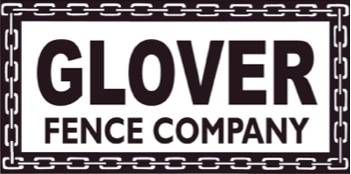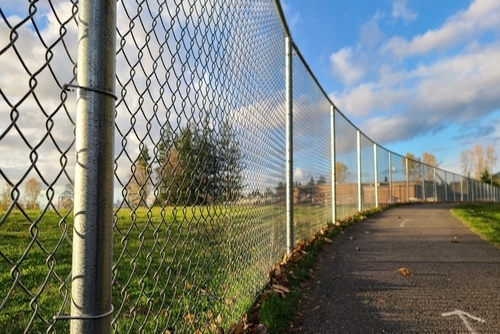Introduction to Chain Link Fence Maintenance
Chain link fences are renowned for their durability and practicality, making them famous for residential and commercial properties. Known for their strength and resilience, these fences can withstand various environmental conditions, from harsh weather to everyday wear and tear. However, like any outdoor structure, a chain link fence requires regular maintenance to ensure its longevity and preserve its appearance.
The key to maintaining a chain link fence lies in understanding its composition and the environmental factors that can affect it. Typically made from coated steel wire, these fences are prone to issues like rust and corrosion over time, especially in humid or coastal areas. Regular maintenance not only helps keep the wall visually appealing but also prevents potential weakening of the material.
Engaging in routine maintenance activities can significantly extend the life of a chain link fence. Simple tasks such as cleaning, inspecting for rust, and applying protective coatings can make a substantial difference. It’s essential to recognize that neglecting these tasks can lead to more significant problems down the line, potentially resulting in costly repairs or even a complete fence replacement.
Therefore, the importance of regular maintenance cannot be overstated. It is an essential practice for anyone looking to preserve the integrity and appearance of their chain link fence, ensuring it continues to serve its purpose effectively for years to come.
Pressure Washing for Cleanliness
Pressure washing is an effective and efficient method for maintaining the cleanliness and appearance of a chain link fence. This process involves using a high-pressure water spray to remove dirt, grime, and other debris that can accumulate on the wall over time. Not only does this enhance the fence’s aesthetic appeal, but it also plays a crucial role in extending its lifespan.
Frequency of Pressure Washing
The frequency of pressure washing a chain link fence largely depends on its location and the environmental conditions it’s exposed to. Generally, a good rule of thumb is to pressure wash the fence at least once a year. However, in areas with high pollution levels or for fences near trees that shed a lot of leaves or sap, more frequent cleaning may be necessary – perhaps twice a year. Additionally, if the wall is in a coastal area where salt spray is typical, more regular washing can prevent the buildup of corrosive salts.
Techniques of Pressure Washing
When pressure washing a chain link fence, it’s essential to use the proper technique to avoid damaging it. Start using a medium-pressure setting and hold the nozzle at a distance from the wall – typically about 12 to 18 inches away. Move the spray sweepingly, covering the entire surface area of the wall. A higher pressure setting can be used for areas with stubborn dirt or rust, but it’s crucial to be cautious to avoid bending or damaging the wires.
Impact on Fence Appearance and Longevity
Regular pressure washing keeps the fence looking new and attractive and prevents the buildup of harmful substances that can cause rust and corrosion. Removing these elements protects the metal from premature wear and tear, thus enhancing the fence’s durability and longevity. In essence, pressure washing is a simple yet vital maintenance task that goes a long way in preserving a chain link fence’s functional and aesthetic value.
Rust Removal Strategies
Rust can significantly compromise the integrity and appearance of a chain link fence. Fortunately, with the right tools and methods, removing rust and restoring the fence’s condition effectively is possible. Here’s a guide to efficient rust removal strategies for your chain link fence.
Tools and Methods for Effective Rust Removal
1. Wire Brushing: Start with a sturdy wire brush to scrub off surface rust. This manual method is effective for light to moderate rusting. Firmly brush along the fence, focusing on rusted areas, to loosen and remove the rust particles.
2. Chemical Rust Removers: Chemical rust removers can be a practical solution for more severe rust. These products are designed to dissolve rust quickly. Apply the remover according to the manufacturer’s instructions, usually by spraying or brushing it onto the rusted areas. After the recommended waiting period, rinse the fence thoroughly with water.
3. Sandpaper or a Sanding Tool: Using sandpaper or a mechanical sanding tool can be effective if the rust is stubborn. Start with a coarse grit and progress to finer grits for a smooth finish.
Precautions and Tips for Safe Cleaning
-
Safety First: When using chemical rust removers, wear protective gloves, goggles, and a mask to avoid inhaling fumes or getting the product on your skin.
-
Test a Small Area: Before applying chemicals to the entire fence, test them on a small, inconspicuous area to ensure they don’t damage the fence’s coating.
-
Avoid Excessive Force: When brushing or sanding, use enough pressure to remove rust, but be careful not to damage the fence’s material. Excessive force can bend or break the links.
-
Proper Disposal: Dispose of any rust particles and chemical residues safely and by local regulations.
-
Rinse Thoroughly: After rust removal, rinse the fence thoroughly with water to remove any residual chemicals or loose rust particles.
By following these strategies and precautions, you can effectively remove rust from your chain link fence, helping to maintain its strength and aesthetic appeal. Regular rust removal is vital to prolonging the life and appearance of your fence.
Applying Zinc Coating for Corrosion Prevention
Zinc coating is highly effective for protecting chain link fences from corrosion. This protective layer is a barrier, shielding the metal from moisture and environmental elements that cause rust. The primary benefit of zinc coating, often called galvanization, is its ability to significantly prolong the fence’s lifespan. It creates a sacrificial layer, which erodes over time, sparing the underlying metal.
Professional application of zinc coating ensures uniform coverage and adherence to the fence’s surface. This process typically involves either hot-dip galvanizing, where the wall is submerged in molten zinc, or electro-galvanizing, which uses an electrical charge to bind the zinc to the wall. Both methods provide a robust and durable coating.
The longevity of a professionally applied zinc coating can be substantial, often extending the fence’s life by several decades. It’s a worthwhile investment for those seeking a low-maintenance, long-lasting fencing solution. Regular inspections can help identify when reapplication is necessary, ensuring continuous protection against corrosion.
Vinyl Coating for Rust Prevention
Vinyl coating on chain link fences is an excellent strategy for rust prevention, offering both protective and aesthetic advantages. This type of coating forms a weather-resistant barrier that shields the metal from moisture, one of the primary causes of rust. It also provides UV protection, preventing the fence from fading and deteriorating under the sun’s harsh rays.
Vinyl coating is typically applied during manufacturing, where the metal wire is thoroughly coated with a layer of vinyl material. This ensures complete and even coverage, which is crucial for adequate protection. Professional services can apply the vinyl coating for existing fences, ensuring adherence to the intricate structure.
Maintenance of vinyl-coated fences is relatively straightforward. Regular cleaning with mild soap and water is usually sufficient to keep the fence looking new. The durability of the vinyl coating means it rarely needs reapplication, making it a cost-effective, long-term solution for maintaining the integrity and appearance of chain link fences.
Regular Inspections for Early Detection of Problems
Regularly inspecting a chain link fence is crucial for early detection of potential issues, ensuring its longevity and functionality. These inspections should focus on several key aspects:
1. Check for Rust and Corrosion: Look for any signs of rusting, especially at the joints and near the ground where moisture can accumulate.
2. Examine the Integrity of the Links: Ensure that the individual links are intact and not bent or broken, which can compromise the fence’s strength.
3. Inspect the Posts and Hardware: Verify that the posts are stable and upright and that all hardware, such as bolts and clips, are secure and not damaged.
Regarding frequency, a thorough inspection should be conducted at least twice a year. However, more frequent checks may be necessary in areas with harsh weather conditions or high pollution. Regular inspections are vital as they allow for the timely identification and rectification of issues, preventing minor problems from escalating into major repairs. This proactive approach saves potential future costs and maintains the fence’s aesthetic and structural integrity.
Painting for Element Protection
Painting a chain link fence protects it from the elements while enhancing its appearance. The selection of suitable paints and primers is crucial for this process. Opt for high-quality, rust-inhibiting primers and paints specifically designed for metal surfaces. These products protect against moisture, UV rays, and corrosion.
Before painting, ensure the fence is clean and free of rust. Apply a metal primer first, which helps the paint adhere better and increases durability. Use a brush or sprayer for even coverage, applying smooth, consistent strokes when painting. It’s advisable to apply at least two coats for optimal protection.
Maintenance of a painted chain link fence involves regular cleaning and touch-ups on chipped or worn areas. This upkeep keeps the wall fresh and extends the paint job’s life, ensuring continued protection against weathering and rust.
Keeping Pets Away to Avoid Damage
Pets, particularly dogs, can inadvertently cause damage to chain link fences. Their instincts to dig, chew, or climb can lead to bent links, weakened structural integrity, and rust from repeated moisture exposure (like saliva or urine). Training pets to respect the boundaries is essential for the fence to mitigate these risks. It can be effective to provide them with ample play areas away from the wall and use deterrents such as safe, pet-friendly repellents near the fence line. Additionally, regularly inspecting the fence’s base for any signs of pet-induced wear or damage ensures early detection and repair, maintaining the fence’s condition and safety.

